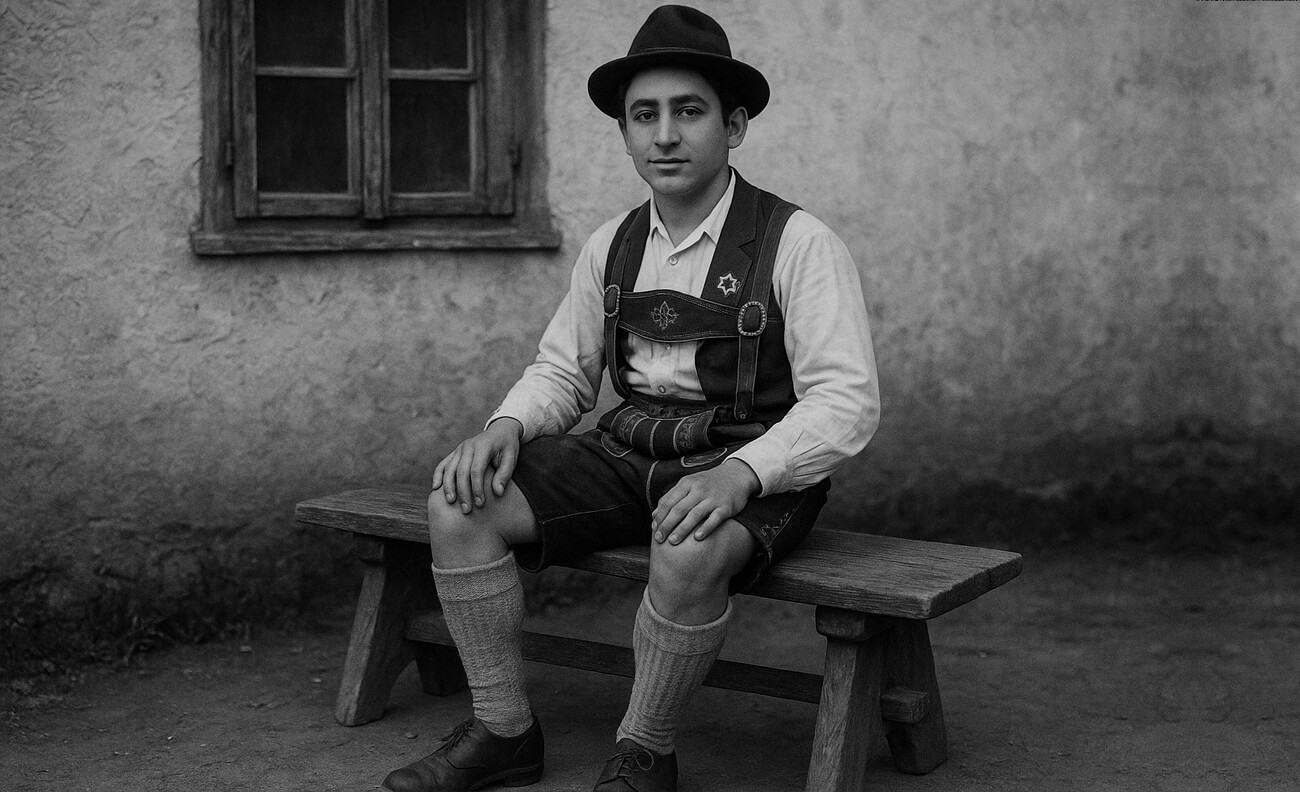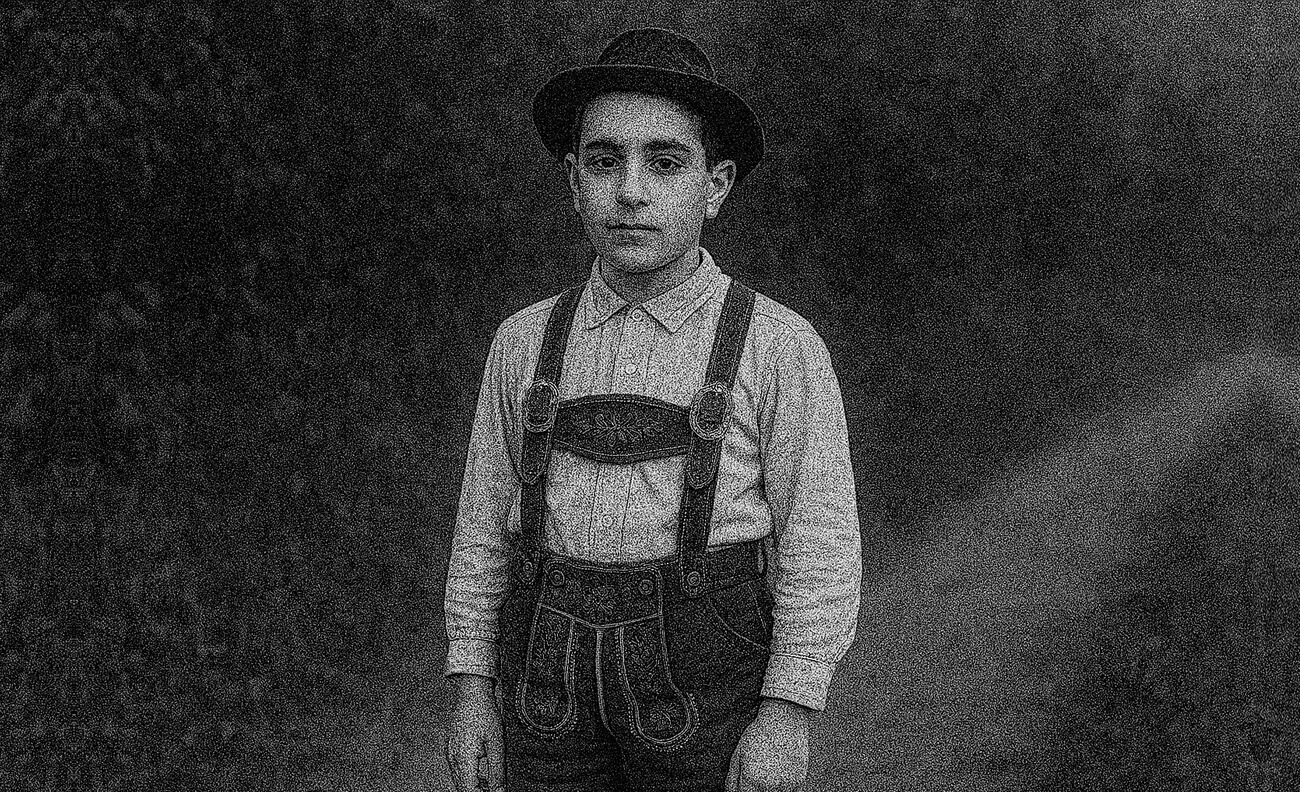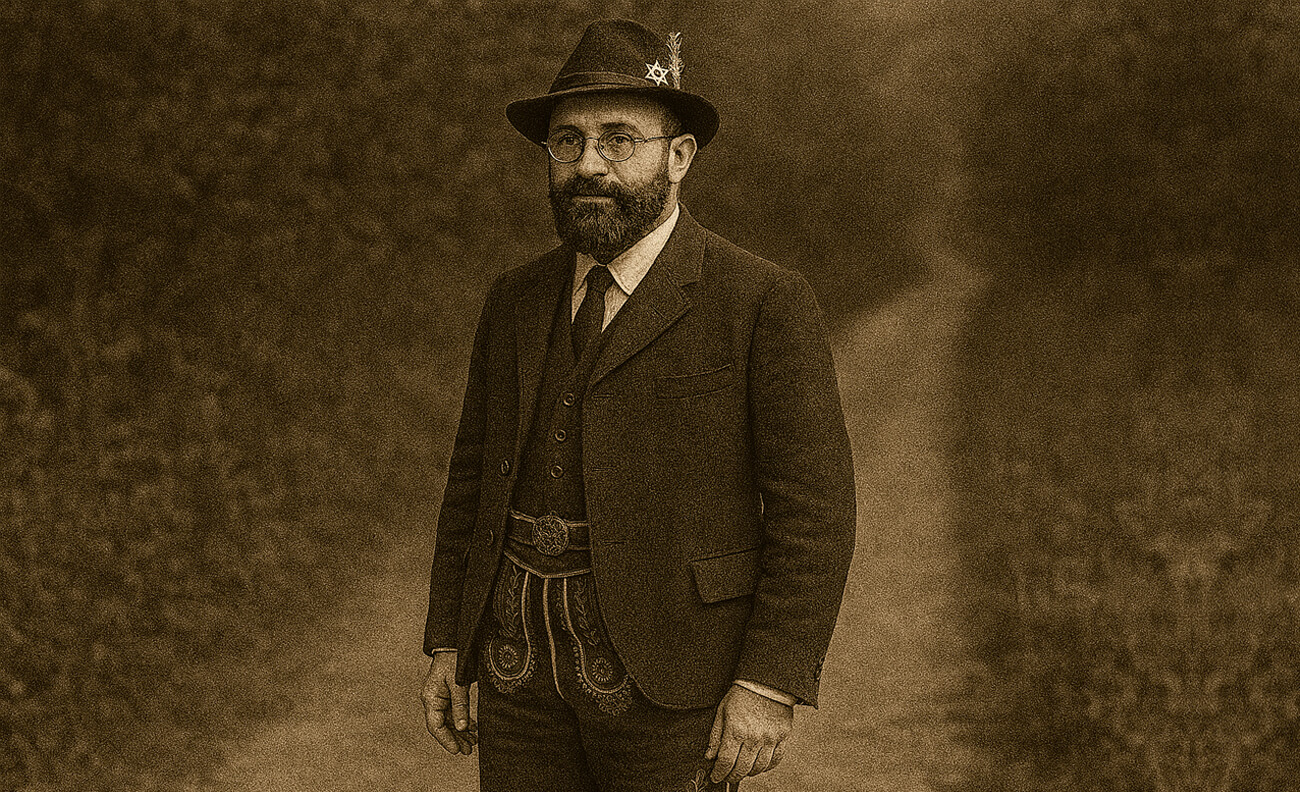Did Jews Wear Lederhosen? A Forgotten Chapter of Jewish and Central European History

When you picture the iconic Lederhosen—those short, tough, leather breeches with suspenders—you probably think of Bavarian farmers, Alpine villagers, or the rowdy festivities of Oktoberfest. You likely do not picture Jewish boys or men proudly donning this symbol of Germanic and Austrian rural culture. Yet, the question “Did Jews wear Lederhosen?” opens a fascinating window into the complexities of European Jewish identity, assimilation, exclusion, and cultural pride. Uncovering this story reveals much about how clothes can be more than mere garments—they can represent inclusion, defiance, heritage, and the politics of belonging.
This comprehensive blog dives deep into the history, social context, and lived experiences behind the simple but loaded question: Did Jews wear Lederhosen? We will explore rare photographs, real-life accounts, historical documents, and the evolving meaning of traditional dress among Jewish communities in Austria, Germany, and Central Europe. We will also reflect on how the echoes of this story live on in today’s discussions about identity, memory, and cultural heritage.
What Are Lederhosen? Origin and Symbolism
Lederhosen (literally “leather pants” in German) are traditional knee-length or short breeches made from leather, associated with Alpine regions—primarily Bavaria (southern Germany), Austria, and parts of Switzerland. Originally, these trousers were worn by peasants, herders, and workers due to their durability and suitability for physical labor in rugged terrains. Over time, Lederhosen evolved from functional workwear to a potent symbol of regional pride and rustic masculinity. By the late 19th and early 20th centuries, Lederhosen, along with the women’s dress Dirndl, had become emblems of “authentic” Bavarian and Austrian culture.
The adoption and celebration of Tracht—the German word for traditional regional dress—were not just about fashion. They were about defining who belonged, who was “local,” and who could claim heritage and community. To wear Lederhosen was, in many contexts, to visually declare your place in the national and ethnic tapestry of the Alpine lands.
Jews in Central Europe: Between Integration and Distinctiveness
For centuries, Jews in Austria, Germany, and Hungary lived both at the margins and the heart of European society. Sometimes forced to dress differently, sometimes seeking to blend in, Jews navigated complicated and shifting expectations. In the 19th and early 20th centuries, as restrictions eased in many places, many Jews embraced aspects of the local majority culture while also preserving unique traditions. This process, known as assimilation or acculturation, often played out through clothing.
For some Jews, adopting local clothing like the Lederhosen was an act of integration—of belonging to the society they lived in. For others, it was simply practical: why wouldn’t a Jewish boy in Vienna, Salzburg, or Munich wear what all his classmates wore? But at the same time, tensions simmered beneath the surface: how far could Jews go in adopting majority customs before their difference was erased—or before they were reminded they were not fully accepted?
Did Jews Really Wear Lederhosen? Evidence from Photographs and Testimony
Did Jews wear Lederhosen? Yes—absolutely, and there is ample photographic, documentary, and anecdotal evidence. In early 20th-century Austria and southern Germany, it was not at all uncommon to see Jewish boys and young men in Lederhosen, especially in urban and semi-urban settings where Jews mixed with the non-Jewish population.
Photographic Evidence
Several archival photographs, now held by institutions such as the United States Holocaust Memorial Museum (USHMM), the Leo Baeck Institute, and Jewish museums in Vienna and Munich, show Jewish children and teenagers in Lederhosen. One famous image from Vienna in the 1930s shows a Jewish boy, smiling with friends, unmistakably dressed in Lederhosen—utterly indistinguishable in clothing from his non-Jewish peers. Another photograph, dated around the same era, depicts Alfred Rahn, a Jewish man in Germany, wearing Lederhosen during a hiking excursion. These images are crucial—they refute any simple story of separation and show how Jews lived as part of the wider society.
Personal Accounts
Memoirs and family stories also attest to the normalcy of Jews wearing Lederhosen. For example, Konrad Mautner, a Jewish folklorist and collector of Austrian folk songs, was a passionate advocate for Tracht, researching and wearing Lederhosen as both an ethnographer and participant in local culture. Children of Jewish families in Vienna, Salzburg, and the Tyrol region remember going to school or summer camp in Lederhosen, sometimes alongside cousins or friends who later perished in the Holocaust.
Reasons for Wearing Lederhosen
Why did Jews wear Lederhosen? There were many reasons:
- Social Integration: Many Jews, especially those who were upwardly mobile or keen to “fit in,” wanted their children to have the same experiences as other local kids.
- Patriotism and Belonging: Some Jewish families felt a deep loyalty to their Austrian or German homelands and expressed this through national or regional dress.
- Practicality: Lederhosen were simply the most sensible clothing for outdoor play and hikes in Alpine terrain.
- Cultural Participation: Involvement in local clubs, scouting groups, and festivals often meant wearing Tracht, regardless of religion.
The Meaning of Tracht: Belonging, Exclusion, and Jewish Identity
For Jewish families, wearing Lederhosen could mean inclusion—but it could also underscore the limits of that inclusion. In some contexts, Jewish children and adults were welcomed as full participants in local life; in others, subtle and overt forms of anti-Semitism reminded them that no matter how they dressed, they were outsiders.

The Dual Meaning of Lederhosen
- Assimilation: For the children of assimilated Jewish families, Lederhosen were simply what one wore. In interwar Vienna, Jewish parents who saw themselves as “Austrians of the Mosaic Faith” dressed their children as the other Austrians did. This helped break down social barriers, at least on the surface.
- Resistance: Ironically, after the Nazis came to power, the relationship between Jews and Lederhosen took on a new, more defiant meaning. When the regime banned Jews from wearing Tracht—including Lederhosen and Dirndl—it transformed these garments into symbols of exclusion and, for some, resistance. As one survivor, Miguel Herz-Kestranek, later said: “Tracht is not a uniform but an expression of extreme individualism.” For some, wearing Lederhosen became a quiet act of protest, a way to claim a place from which they were being violently excluded.
Clubs, Festivals, and Jewish Involvement
It’s important to remember that Jewish participation in regional culture was not limited to clothing. Many Jews in Vienna and elsewhere joined local sports clubs, hiked in the mountains, and participated in folk festivals. In some cases, Jewish youth movements—such as Hashomer Hatzair—encouraged wearing Lederhosen or similar hiking attire during outings, blending Zionist ideals with local custom.
The Rise of Nationalism and Exclusion: When Clothes Became a Political Statement
The seemingly simple act of wearing Lederhosen became highly charged as Europe’s political climate shifted in the 1930s. The rise of nationalist, fascist, and ultimately Nazi ideologies turned symbols of regional identity into markers of exclusion and racism. In Austria and Germany, organizations like the Bund der Deutschen Trachtenfreunde (League of German Tracht Friends) sometimes explicitly excluded Jews and other minorities, claiming authentic Tracht was only for “Aryans.”
In 1938, after the Nazi annexation of Austria (the Anschluss), Jews were officially banned from joining most clubs and from wearing Tracht in public. Suddenly, Lederhosen—once a garment of integration—became a forbidden symbol. Some Jewish families gave up these clothes in sorrow or fear. Others, however, clung to them as tokens of a lost world, or even wore them in defiance.
Case Study: The Jewish Dirndl and Female Tradition
While Lederhosen were typically worn by boys and men, the Dirndl—the colorful, patterned dress with apron and fitted bodice—became popular among women and girls. Jewish women, especially in urban centers and holiday resorts, wore Dirndls at summer retreats, community picnics, and family gatherings.
Jewish Girls and the Dirndl: Photos from the 1920s and 1930s show Jewish girls at summer camps or in Alpine spas wearing Dirndls just like their non-Jewish counterparts. For many, this was simply a way to join in the fun, embrace local fashion, or assert their place in Austrian or German society. For some, the Dirndl (and Lederhosen for their brothers) became a bittersweet memory after the Nazis made these clothes off-limits.
The Nazi Era: Bans, Exclusion, and Trauma
The question “Did Jews wear Lederhosen?” cannot be answered fully without facing the horror of what came next. After the Nazis came to power, Jewish participation in German and Austrian cultural life was systematically erased. Laws forbade Jews from wearing Tracht or participating in “Aryan” clubs, and many Jews—especially children—were bullied or attacked if they wore such clothing in public.
Testimonies from Survivors
In memoirs and interviews, Holocaust survivors recall the pain of having to stop wearing Lederhosen or Dirndls. Some kept their beloved garments in hiding, as relics of happier times. Others destroyed them in fear. For some, the memory of being forced out of clubs, schools, or social groups, despite all efforts to “belong,” was one of the most painful premonitions of what was to come.
Lederhosen as Protest
A few defiant individuals continued to wear Lederhosen or Dirndl even after the bans, sometimes as a silent protest, sometimes simply as a refusal to let the Nazis define who they were. For these Jews, clothing became a battleground of identity—a way to assert that they were as Austrian or German as anyone, no matter what the regime said.
After the War: Memory, Loss, and the Search for Belonging
The legacy of Jewish Lederhosen did not end with World War II. In the decades that followed, as survivors rebuilt their lives in Austria, Germany, the United States, and Israel, memories of pre-war life—including the clothes they wore—became powerful symbols of both loss and resilience.
Postwar Austria and Germany
In postwar Austria and Germany, Jewish communities shrank dramatically, but a handful of families remained or returned. For many, Lederhosen and Dirndl were reminders of a shattered world. Some Jewish survivors and their children reclaimed these clothes, wearing them on special occasions or in memory of loved ones lost. Others avoided them, associating Tracht with the culture that had rejected and murdered their families.
Revival and Reinterpretation
In recent years, a new generation of Jews in Austria and Germany has begun to rethink the meaning of traditional dress. Some Jewish museums feature Lederhosen and Dirndl as part of their exhibitions, highlighting the complex and sometimes contradictory history of Jewish participation in national culture. Young Jewish designers—such as the Munich-based Noh Nee—have even begun reinterpreting Tracht for the 21st century, blending old forms with new meanings.
Today: Lederhosen, Identity, and Shared Heritage
So, do Jews wear Lederhosen today? The answer is: some do, and for a variety of reasons. At festivals like Oktoberfest, it’s not uncommon to see Jews and non-Jews alike enjoying Tracht as part of their shared culture. For some Jewish families in Austria and Germany, Lederhosen is simply festive attire, stripped of its older, darker meanings. For others, wearing Lederhosen or Dirndl is a way to honor ancestors, reclaim a heritage that was nearly destroyed, or assert a right to belong in the countries their families helped build.
Lederhosen in Jewish Museums and Memory
Jewish museums in Vienna, Munich, and elsewhere now feature Lederhosen and Dirndl in their collections. These clothes serve as both a reminder of integration and a symbol of exclusion. They help visitors understand that Jewish life in Austria and Germany was never as separate—or as simple—as stereotypes suggest.
Jewish Voices on Lederhosen
Modern Jewish writers, artists, and thinkers continue to debate the meaning of Tracht. Is it a symbol of assimilation? Of lost innocence? Of a complicated but enduring connection to homeland? For some, putting on Lederhosen is an act of memory or solidarity. For others, it is simply about comfort, style, or fun. What is clear is that there is no single answer—just as there was never a single way to be Jewish in Central Europe.

Frequently Asked Questions
Yes. Many Jewish children, men, and even women (via Dirndl) wore traditional Alpine dress in Austria, Germany, and Hungary—especially before World War II.
For reasons of integration, patriotism, practicality, and participation in local cultural life. Sometimes, wearing Lederhosen was also an act of pride and defiance.
Yes. After 1938, the Nazi regime banned Jews from wearing Tracht, including Lederhosen and Dirndl, as part of a wider effort to erase Jewish participation in “Aryan” culture.
Some do, particularly in Austria and Germany, at cultural events and festivals. The meaning today is complex—ranging from family tradition to cultural revival.
Some do, particularly in Austria and Germany, at cultural events and festivals. The meaning today is complex—ranging from family tradition to cultural revival.
For some, yes; for others, it is a reclaimed tradition or simply part of local culture. The meaning varies by individual and context.
Conclusion: Why This History Matters
The story of Jews and Lederhosen is about much more than fashion or folklore. It is a window into the ways Jewish life in Central Europe was deeply intertwined with national culture—sometimes celebrated, sometimes brutally rejected. It is about the efforts of generations of Jews to belong, to participate, and to assert their right to be both Jewish and Austrian, German, or Hungarian.
It is also a lesson for today: that cultural identity is never simple, and that what we wear can carry histories of joy, sorrow, belonging, and resistance. Next time you see a pair of Lederhosen or a colorful Dirndl, remember that their story is richer and more complicated than you might think—and that, yes, once upon a time, Jews wore Lederhosen too.
